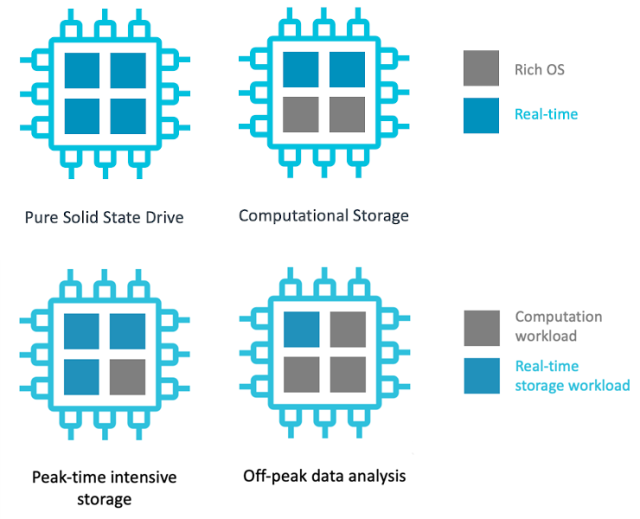Last Friday, Arm announced the newest generation of its real-time processor series, the Cortex-R82. Most people are more familiar with the Cortex A-series of CPUs, which are used as the primary processors in devices such as smartphones and tablets, running full-fledged operating systems. The Cortex-R series, by contrast, is typically used for high-performance applications demanding "real-time" performance—meaning simple, predictable, and extremely low-latency response loops—in much simpler software stacks.
Earlier Cortex R-series processors weren't capable of running full-fledged modern operating systems, including Linux, because they utilized a simple Memory Protection Unit (MPU) rather than the more complex Memory Management Unit (MMU) needed to support functions such as virtual memory. This generally wasn't seen as a problem, since Real-Time Operating System (RTOS) workloads generally need to have much simpler, more predictable control loops.
Real-time versus multitasking

The Cortex R-82 still offers a simple MPU, but it can be optionally configured with an MMU as well—and the CPU's cores can be individually, and dynamically, assigned to either. Arm's Neil Werdmuller hypothesizes storage controllers that might operate with different profiles during peak and off-peak hours, reassigning cores from real-time "pure SSD" duties to "computational storage"—likely meaning onboard AI analysis—as needed.
Flexible design
When used for cache-friendly applications such as storage controllers—in which Arm says the R-series has 85 percent of the market—the 32-bit architecture of previous designs placed sharp performance limits. Modern SSDs routinely feature 2GiB onboard DRAM, which is uncomfortably close to the 4GiB theoretical maximum address limit of a 32-bit CPU.
The R-82's 64-bit architecture brings it inline with modern mainstream processors, enabling it to address a physical address space up to 1TiB. The new architecture also brings support for optional Neon units for Single Instruction, Multiple Data (SIMD) processing, allowing for greater flexibility in storage designs.
Finally, Cortex-R82 designs with the optional MMU will be capable of running full-stack operating systems such as Linux, as well as—and even in parallel with—simpler RTOS. This will allow reuse of Read More – Source
[contf] [contfnew] 
arstechnica
[contfnewc] [contfnewc]







